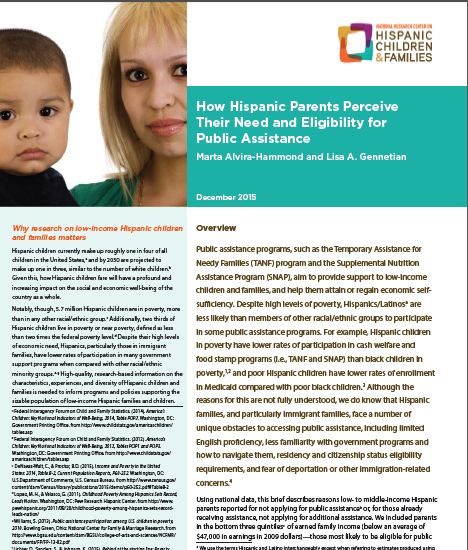Jun 11, 2020
Research Publication
The majority of low-income Hispanic and Black households have little-to-no bank access, complicating access to COVID relief funds
Authors:
Latinos are among the populations hardest hit by the COVID-19 pandemic. Emerging data indicate that Latino and Black individuals make up a disproportionate share of confirmed cases and hospitalizations, and Black individuals make up a disproportionate share of COVID-related deaths. Additionally, the pandemic has disproportionately impacted the work conditions of Latinos; 57 percent of Hispanic adults report that they or someone in their family has lost a job or had their work hours or wages reduced because of the pandemic. In this data point, we continue to examine how COVID-related federal aid may not be reaching some of the families and households most in need, including Hispanics.
The Coronavirus Aid, Relief, and Economic Security (CARES) Act aims to provide rapid and much-needed economic relief straight into Americans’ pockets—including via direct payments. In general, for those with incomes falling below the income caps, relief checks of up to $1,200 for single tax filers and up to $2,400 for married couples filing jointly—plus $500 for each dependent child—have been delivered to households starting in April. Funds are delivered either through direct deposit or via mailed checks for those without direct deposit. Direct deposit and checks, however, pose a challenge for Americans without bank accounts or with limited access to banks.
The majority (60%) of Hispanic and Black low-income family households had no or limited access to banks, according to data from the Federal Deposit Insurance Corporation (FDIC). In 2017, 30 percent of low-income Hispanic and Black family households (defined here as households including two or more related people with a total income up to $30,000) did not have a bank account, compared with 11 percent of low-income White family households. Unbanked families often rely on alternative financial services to carry out their financial transactions, such as check cashing services, money orders, or payday loans. An additional 30 percent of low-income Hispanic and Black family households were underbanked, meaning that they had a bank account but also relied on alternative financial services. Alternative financial services, in general, tend to have high fees and can place additional financial burdens on low-income families.

It is essential that families be able to access the financial supports intended to help them weather the pandemic’s economic fallout. This is even more critical for the many Latino families who entered the pandemic already at higher risk for poor health and economic outcomes. For example, our research shows that low-income Hispanic families disproportionately live in crowded housing conditions and have limited access to employer-sponsored health insurance. Additionally, one in four Latino children has at least one parent who is an unauthorized immigrant; these families may be particularly vulnerable given their lack of access to health care and job protections. To further compound distress, unauthorized immigrants are ineligible for the relief checks delivered under the CARES Act, as are many mixed-status families. As policymakers consider future efforts to financially support families through this crisis, it is critical that they align how relief is delivered with the ways in which households access financial resources. Doing so will ensure that needed aid reaches all families equitably and does not further exacerbate already deep economic disparities.
Note: More recent data from the Survey of Household Economics and Decisionmaking (SHED) by the Federal Reserve, administered in October 2019, show similar patterns of unbanked and underbanked status by race/ethnicity, with Black and Hispanic adults having elevated rates of being unbanked and underbanked compared to White adults, although rates appear to be somewhat lower among Hispanic adults in the SHED data (10% of all Hispanic adults reported being unbanked and 22% reported being underbanked). These differences are likely due to differences in the measurement of unbanked and underbanked status, differences in sampling, and differences in unit of analysis (adult vs. household). We have chosen to present data from the FDIC, despite these data being older, because of their detailed measures of unbanked and underbanked status, robust sampling design (address-based sampling frame based on the Current Population Survey vs. an online panel selected based on address-based sampling), and larger sample size (N=35,217 vs. N=12,173) compared with SHED data.




